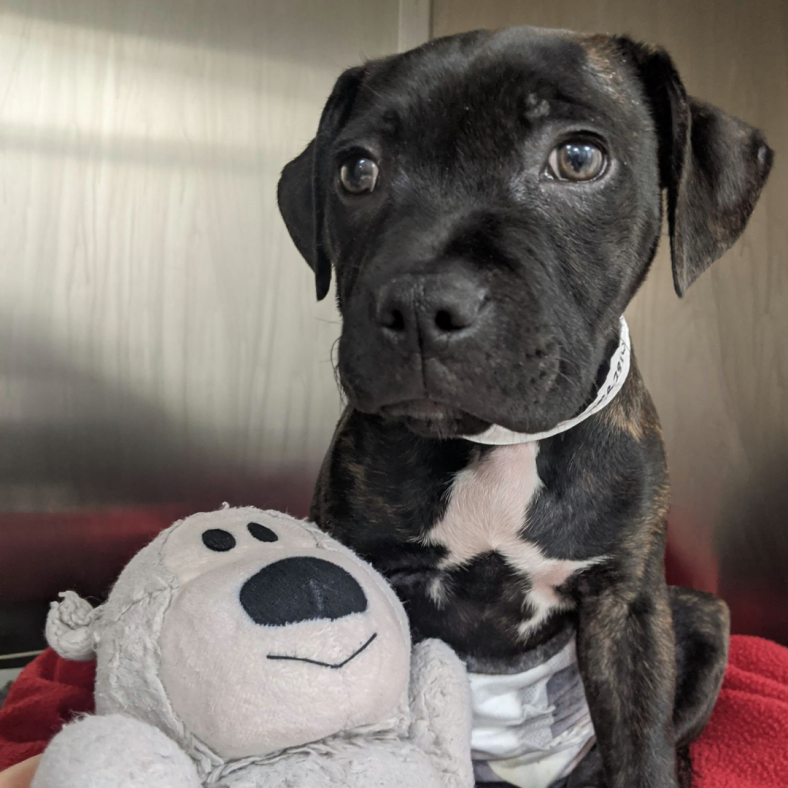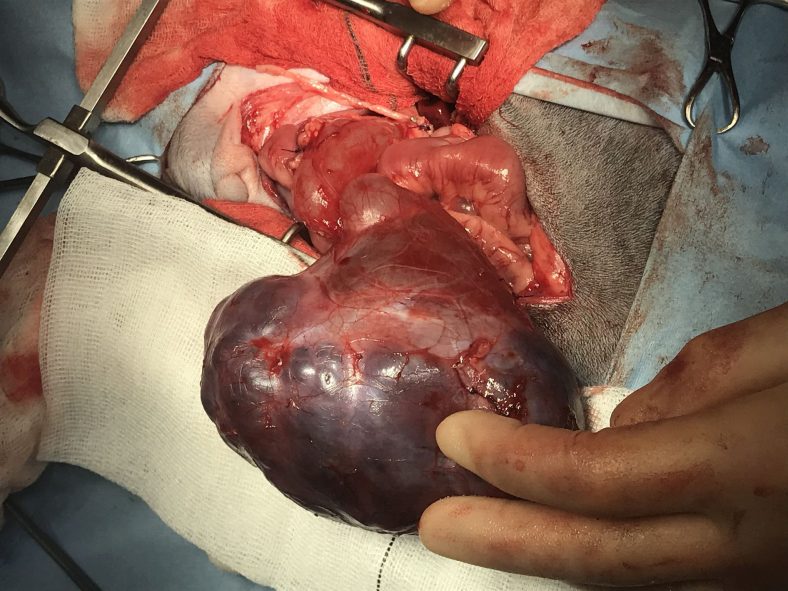Our Community
Quasar’s story

Quasar in our Dog Ward after surgery
WARNING: This blog post contains a graphic surgical image.
In the days after Quasar’s carer had collected him from a breeder, his behaviour seemed abnormal. He was chewing his right hind leg and scratching at his flank. He also seemed to be in pain when trying to go to the toilet.
The kidneys have many functions, including removing waste products from the bloodstream to produce urine. Normally, each kidney is connected to the bladder by a tube called the ureter, allowing urine to pass through.
Following an ultrasound examination at his primary care practice, Quasar’s vet suspected that he had hydronephrosis. This is the swelling of the kidney due to a build-up of urine inside it. In Quasar’s case, this was suspected to be the result of an ectopic ureter, which is where the ureter does not connect to the bladder correctly for urine to pass through.
Hydronephrosis tends not to cause long-term problems to overall health if it is diagnosed and treated promptly, so Quasar was admitted for surgery at The Ralph.
When our Soft Tissue Surgeon, Sam, met Quasar, she recorded his movements. This included a normal “puppy squat” to urinate, followed by the below movements where he can be seen passing very small amounts of urine.
He was also displaying involuntary movements like stiffening and straightening of his little legs, and scratching at his flank.
Our Diagnostic Imaging team performed another abdominal ultrasound on Quasar, which showed a slightly enlarged left kidney at 5.7cm compared to a severely enlarged right kidney at a whopping 9.5cm. For reference, 9.5cm is the size of an adult St Bernard’s kidney.
The ultrasound showed that the right ureter was hugely dilated and twisted. It was connected to the prostate gland instead of the bladder, confirming the suspicion that the enlarged kidney (hydronephrosis) was caused by an ectopic right ureter (a birth defect causing an abnormally formed ureter).
Sam performed a surgery called a ureteronephrectomy. She completely removed the enlarged kidney along with its ureter. See a picture below…

Quasar’s kidney being excised
Quasar recovered well from surgery with medication and monitoring by our team of Wards and Night Nurses. He was discharged a couple of days later with some pain relief and instructions for strict crate rest for 10 days.
Because of his age, it’s important that Quasar doesn’t miss out on any vital socialisation because of the crate rest. Sam was able to make some suggestions on how to keep Quasar appropriately stimulated.
Sam was pleased with how Quasar’s surgery went, and the general prognosis for cases like this is good. Like us humans, dogs can live a normal life with just one kidney. We wish Quasar a long, happy and healthy life!
Thank you for reading Quasar’s story, check out our Facebook and Instagram for regular patient stories.
Take care,
Team Ralph.
